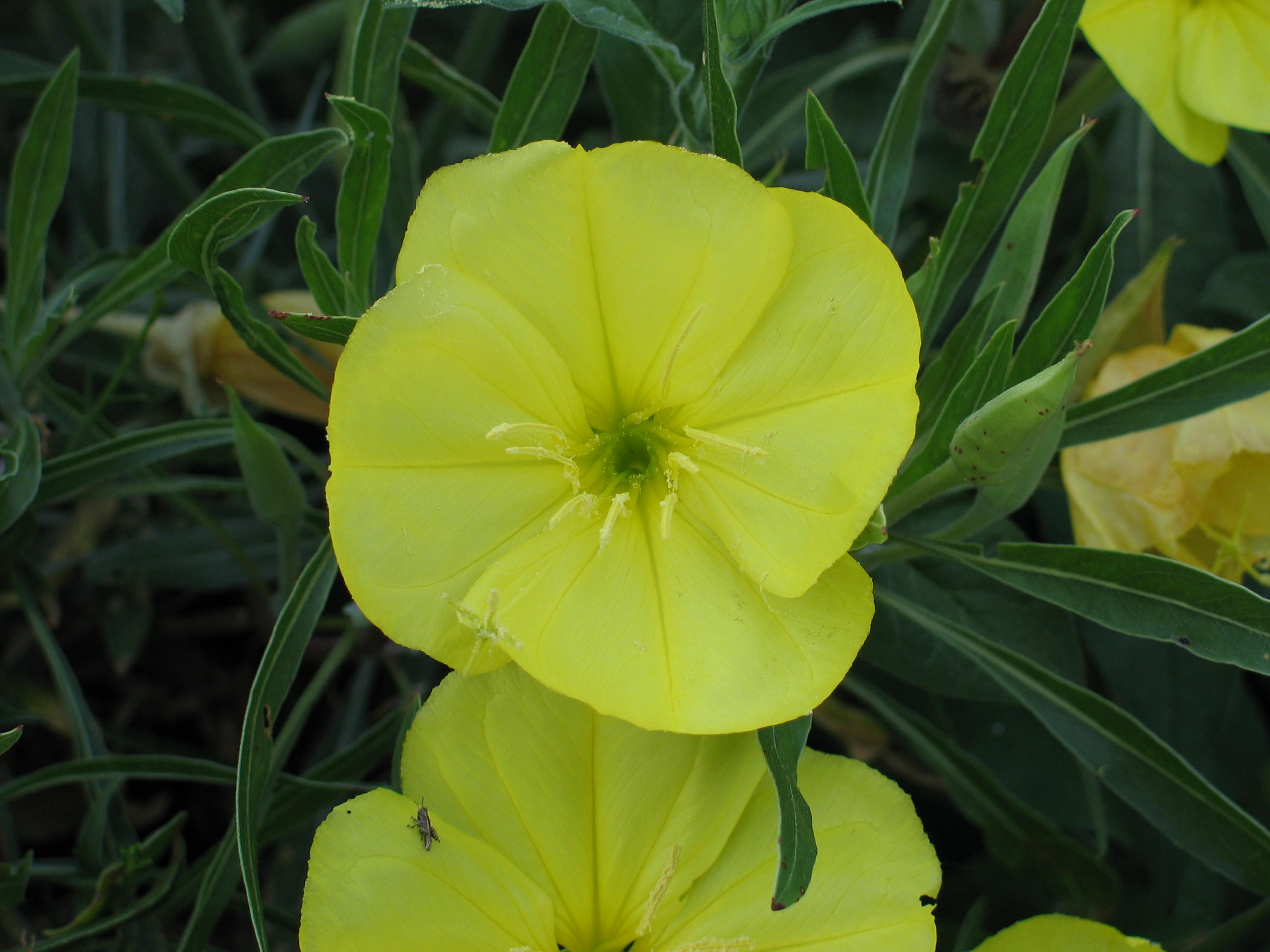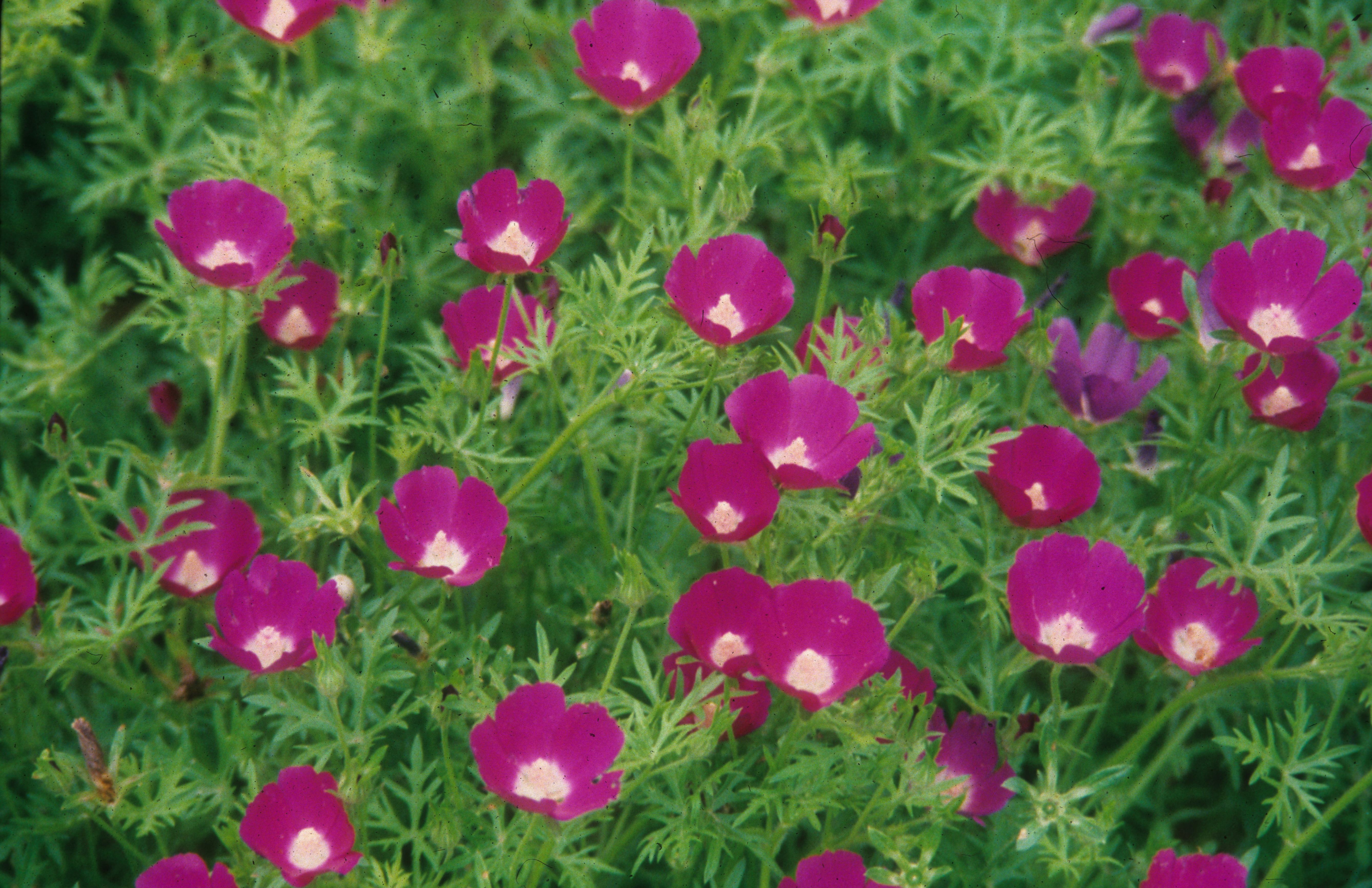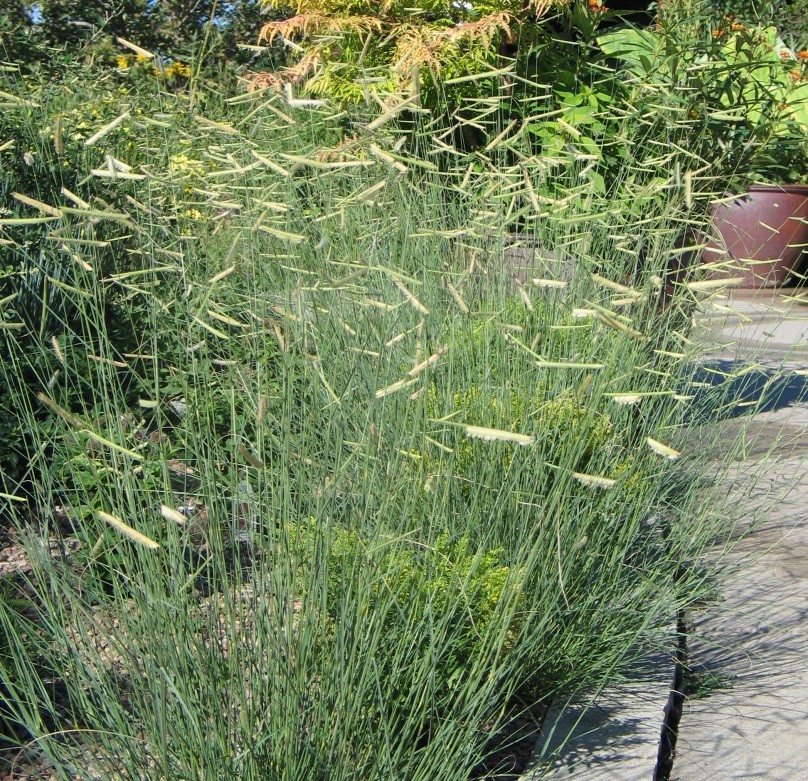As you think about your native landscape, taller plants are easier to plug into the design. There are more choices from which you can add diversity, color, texture and habitat. These taller layers are the backbone of any plan, while the edges or ground level are often overlooked. In my opinion, the border plants are just as important because they define the edges. The larger perennials typically overshadow these native groundcovers, but here are a few that stand out in the landscape.
Missouri Evening Primrose-Oenothera macrocarpa
In the wild, this low growing wildflower is found clinging to exposed hillsides. If it can survive that environment, it will be a tough drought-tolerant plant for any sunny spot. The large, showy, yellow flowers bloom from May through August, but the majority of the blooms come in April and May. One plant can spread up to 24 inches while only reaching 6 to 12 inches tall. Obviously, it likes it dry, so don’t over water them. They look great along walkways or spilling over rock walls with their silver green leaves and reddish stems.
Purple Poppy Mallow-Callirhoe involucrata
Some like it hot, but these like it really hot. The deep tap root of Purple Poppy Mallow sustains it during times of drought. These roots are starchy and supposedly taste like a sweet potato. (I don’t know if I am that hungry, but it may be worth a try.) The magenta cup-like blooms appear throughout spring and into summer. I like to interplant with low grasses or shorter perennials that bloom later in the season, such as blazing stars or goldenrods. The stems hug the ground and ultimately spread 24-36 inches wide and 6-12 inches tall.
Blue Grama ‘Blonde Ambition’-Bouteloua gracilis
Unlike any other native grass, ‘Blonde Ambition’ will make an impact in your garden. The eyelash-like seedheads dance with even the gentlest breeze atop the fine blue-green foliage from mid-summer into winter. Selected for its unique habit and hardiness, it can be used in a variety of settings from clay to sandy soils. It gets larger than most Blue Grama grass, maxing out at 24 inches. Space them 18 to 24 inches apart for best display. Regularly, Blue Grama is found growing with Buffalograss in the shortgrass prairie, making it an important native grass of the Great Plains.
Rose Verbena-Glandularia canadensis
This plant holds the record for most months in bloom. I have seen it in bloom from March through December. It is one of the first to bloom in the spring and if we get some beneficial rain in the fall, it will bloom again. In the prairie, rose verbena can be found in open bluffs and rocky outcroppings. It requires minimal rain and terrible soil for the best growth. Sounds like a winner to me. The vibrant pinkish-purple blooms will brighten any border. Give it room to spread. One drawback is that they are not very long lived, every few years, plants will completely die out or move. I think that they bloom themselves to death. Just replace with new plants and again enjoy this sun loving groundcover.
Stiff Coreopsis-Coreopsis palmata
Each spring, the golden yellow blooms of this prairie beauty burst open with an eruption of glorious sunshine. The stems are lined with leaves that resemble little hands lifted skyward. It is a favorite of pollinators as they flock to the nectar rich flowers from late spring to early summer. I give it some room to roam since it slowly spreads to fill in an area when it is happy. Eventually, spreading to 36 inches or more and growing 24 inches tall, this wildflower is a great alternative to its other coreopsis cousins.
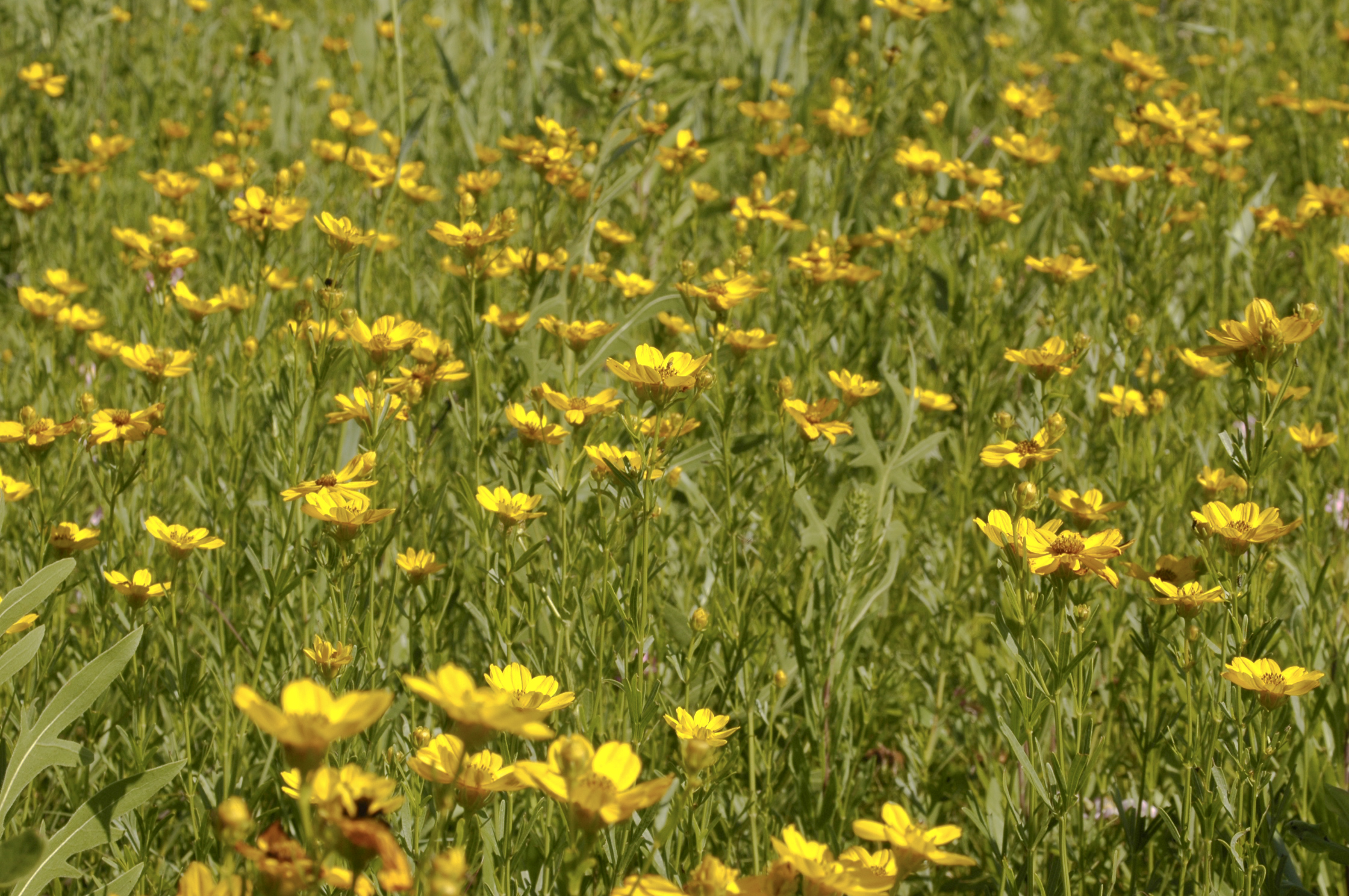
Coreopsis palmata-By Frank Mayfield (Flickr: Coreopsis palmata PRAIRIE COREOPSIS) [CC BY-SA 2.0 (http://creativecommons.org/licenses/by-sa/2.0)], via Wikimedia Commons
Prairie Dropseed-Sporobolus heterolepis
At one time, this was one of the top selling grasses nationwide. It is a favorite of mine because it is long-lived and tough. It is so tough they are planted in mass in street medians. The fine textured leaves and airy, fragrant panicles are a nice addition to any landscape. Each clump can reach 12-18 inches wide and up to 24 inches tall. The entire plant turns shades of orange and yellow in the fall providing multiple seasons of interest. It is great in a border, as a groundcover, in an informal prairie setting or as an accent to other short or mid-range perennials.
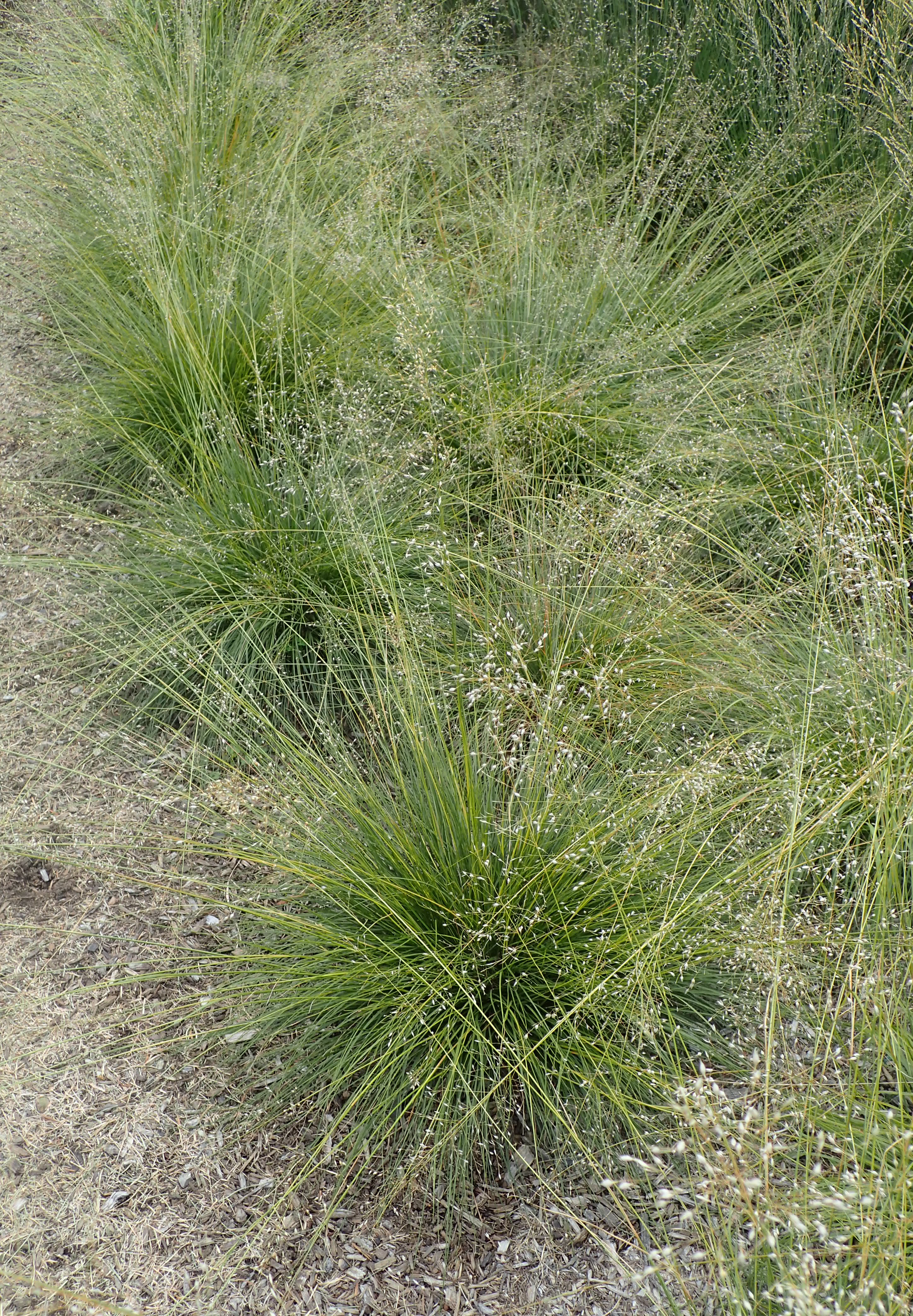
Sporobolus heterolepis-By Krzysztof Ziarnek, Kenraiz (Own work) [CC BY-SA 4.0 (http://creativecommons.org/licenses/by-sa/4.0)], via Wikimedia Commons

